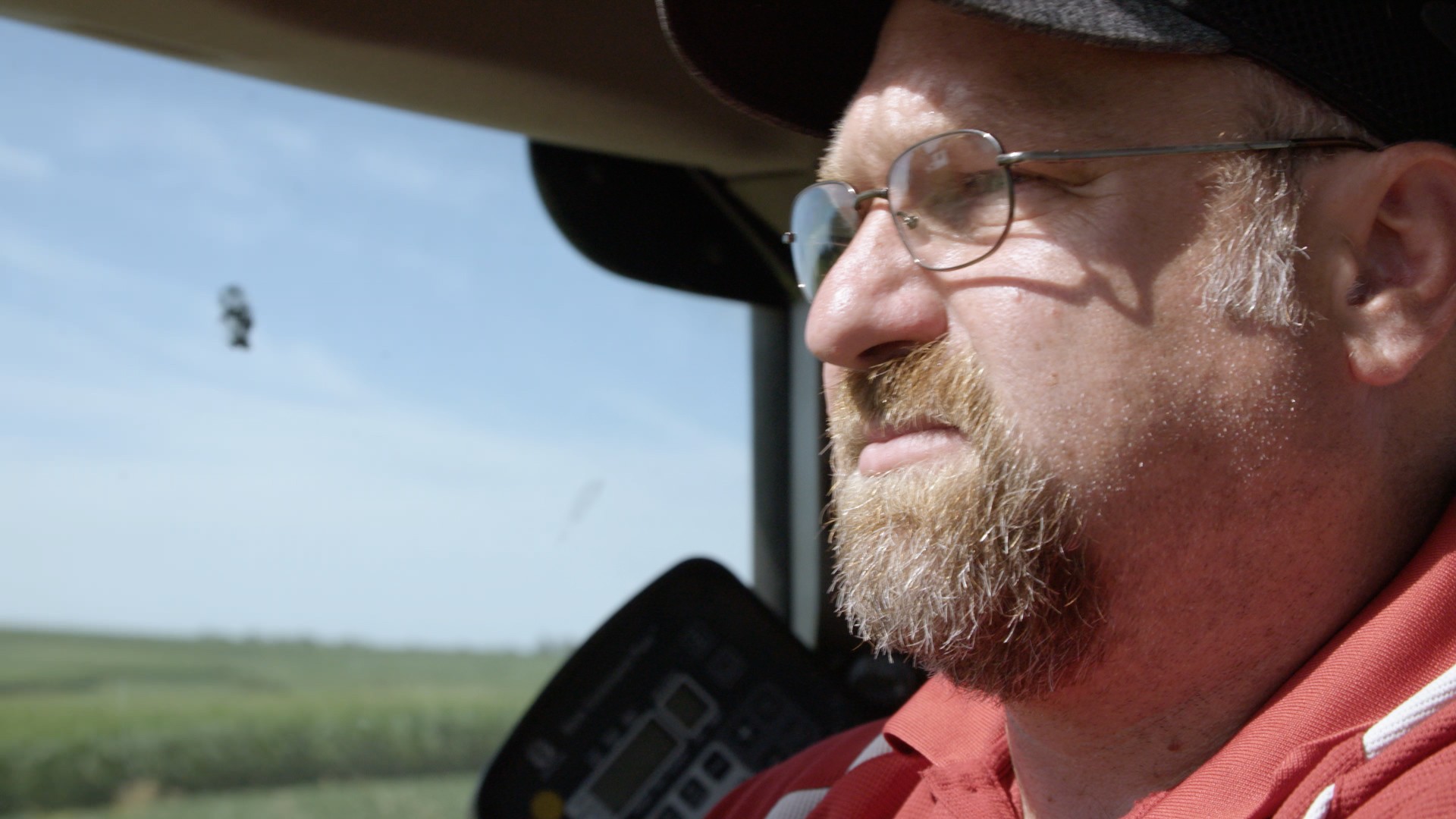Photo via Wikimedia Commons/The College of Mount St. Joseph
Angela Ziff developed an eating disorder in high school.“Our coach was really hard on us,” Ziff says by phone. “Especially the women, because that was the time when, you know, you develop.”The disorder dissolved her very foundation; her feet were fracturing beneath her, the lack of nutrition forcing her into a state of osteopenia, her bones weakened. Stalking Ziff to the University of Nevada, Las Vegas, where she ran cross country and track for the Rebels, the eating disorder was exacerbated by the pressures of college life, both as a student and a Division I athlete. But while the eating disorder remained, her coach changed.Coach Jebreh Harris had an open door policy and, after Ziff went to him with her condition, walked her personally to UNLV's counseling center.“That was incredible,” Ziff says. “I think that really put me in the right direction of getting the true help I needed.” Ziff had had a counselor since high school, when her parents first learned about her eating disorder, so while she was open to treatment, she did not particularly care for the treatment she received. Athletes, to Ziff, have a different mindset, and needed to be encouraged and treated differently.Harris pointed her towards The Optimum Performance Program in Sports (TOPPS), a mental health program custom-tailored for athletes at UNLV. Buoyed by more positive, optimization-driven messaging, performance coaches—read: therapists—with athletic backgrounds, and all the trappings of any nutrition or conditioning room, Ziff began to make progress. She worked with her performance coach, Marina Galante, whose history in gymnastics immediately resonated with Ziff. “Gymnastics mentally is so hard,” Ziff says. “And especially with eating.”Galante and Ziff met to prioritize and establish her treatment goals. A support team—key to TOPPS treatment strategy—was developed for her, including her parents.“They gave me a peace of mind in regards to my body,” Ziff says. “And my self image, how it related to me on the track.”Spearheaded by UNLV's Dr. Brad Donohue, a former PAL champion boxer, TOPPS takes clinically proven methods of treatment and modifies them to work for athletes. It is geared towards optimzing performance, not fixing problems; it frames concepts, skill, and treatments with the language of sports, not psychology, and explicitly attempts to de-stigmatize mental health care. Family Behavior Therapy, for instance, a tried and true method which incorporates the friends and family of the patient in their treatment, was modified to include not only the athlete's family, but also coaches, teammates, friends and significant others. Therapists were performance coaches, all goals were presented as optimization issues, and Rebels paraphernalia festooned the TOPPS offices.Swag with the TOPPS logo was printed and distributed, and performance coaches were encouraged to share personal anecdotes that related to the athletes, like Galante did for Ziff. All of this was aimed not only at providing better treatment, but reducing stigma. Stigma—especially in sports—is one of the main impediments to mental health treatment. By infusing the distinct and important culture of sports, TOPPS aimed to dramatically reduce stigma.TOPPS's focus on culture may have an impact beyond sports.“What we knew from the literature going in is that ethnic culture and sport culture are very important,” Donohue said by phone.TOPPS used a tool developed by Donohue, a seven question survey to determine how crucial one's culture is to a participant, called the Semi-Structured Interview for Consideration of Ethnic Culture Scale, modified to deal with sports instead of ethnicity. What they found was that sports culture was extremely important in the minds of the athletes, often ranked above even ethnicity. Many were thankful for the opportunity athletics had given them to go to college; they considered the friends they made in sports to be forged in competitive fire, long-lasting and crucial, making FBT particularly crucial; they considered themselves as living in a culture of excellence, an emphasis on performance TOPPS availed itself to.It is not difficult to see TOPPS' successful application of culture in mental health treatment expanded to any culture wherein stigma and mores may reduce the chances of getting mental health treatment. Programs like TOPPS but designed for, say, military members, first responders, or first-generation immigrants may prove the future of treatment.

The program finished a $2 million, five year study funded by the National Institute of Health—the first funded by NIH to demonstrate mental health improvement in athletes that were formally diagnosed with a disorder—this past spring testing its efficacy in comparison to more traditional models; the results, published in the Journal of Clinical Sports Psychology, are promising.For the randomized controlled trial, 74 athletes were surveyed and placed at random into either TOPPS or the counseling center, where they received services as usual (SAU). The athletes included varsity, intramural, and club athletes, who used drugs or alcohol at lest once in the previous four months. (the National Institute on Drug Abuse was the arm of the NIH which signed the check).Athletes placed into TOPPS then met their performance coaches for a second, semi-structured interview.“Really, that helped to engage the athletes,” said Galante, a performance coach and doctoral student in clinical psychology at UNLV. “As well as helping them feel heard, respected, and understood.”Engagement is crucial because of the bespoke nature of the program. “We individualize it for each athlete that comes in,” Galante said. So beyond their universal TOPPS goals—improved wellness, as well as sport and relationship performance—the program is tuned to whatever the athletes express a desire to work on.“That is a unique part of our program,” Yulia Gavrilova, formerly of UNLV and currently completing her clinical internship at Brown University’s Alpert Medical School, said by phone. “It's a manualized intervention that we utilized. It is, nevertheless, flexible, in the sense that it's consumer driven.” So while the skill and tools—communication or interpersonal skills, for example—are standardized, their application and prioritization is specific to each athlete.The athletes decide who to include in their extended support team, and the performance coaches utilize numerous methods—including in-person, on the phone, or via Skype—to ensure that the team can be with the athlete at their meetings.At the end of the trial, the TOPPS athletes were found to have consistently better outcomes than their SAU counterparts. Their relationships had improved, their mental health symptoms had improved, and the factors that can plague performance were reduced. Among the most striking and important results were the TOPPS athlete's participation rates. Both the athletes and their support teams attended, and finished, the TOPPS program at a rate higher than SAU.“The participation rates were strikingly different,” Donohue said. And TOPPS is having a demonstrable impact on the stigma surrounding mental health at UNLV; many of the participants came on recommendation of coaches, teammates or other members of the athletic department, or of their own volition after a TOPPS presentation was given to their team.“We tried to educate them [the players] about the importance of it,” Chris Shaw, UNLV's women's soccer coach, said by phone. “That it was a tool. It was no different than us utilizing a strength and conditioning coach.”Participation in mental health treatment is the only panacea for the difficulties currently plaguing sufferers; medications, therapies, and treatments for mental health are proven as effective as for more bodily ailments, but insurance companies and culture at large contribute to a stifling social stigma. With TOPPS initial success, the athletes at UNLV are providing evidence that such attitudes can be changed and progress can be made.“The fact that the option is there, I think it needs to be more widespread,” said Ziff. “Let people know that there are other options out there. You don't have to be, through any field, struggling through it alone. There's avenues.”
Advertisement
Advertisement
Advertisement

The program finished a $2 million, five year study funded by the National Institute of Health—the first funded by NIH to demonstrate mental health improvement in athletes that were formally diagnosed with a disorder—this past spring testing its efficacy in comparison to more traditional models; the results, published in the Journal of Clinical Sports Psychology, are promising.For the randomized controlled trial, 74 athletes were surveyed and placed at random into either TOPPS or the counseling center, where they received services as usual (SAU). The athletes included varsity, intramural, and club athletes, who used drugs or alcohol at lest once in the previous four months. (the National Institute on Drug Abuse was the arm of the NIH which signed the check).Athletes placed into TOPPS then met their performance coaches for a second, semi-structured interview.“Really, that helped to engage the athletes,” said Galante, a performance coach and doctoral student in clinical psychology at UNLV. “As well as helping them feel heard, respected, and understood.”Engagement is crucial because of the bespoke nature of the program. “We individualize it for each athlete that comes in,” Galante said. So beyond their universal TOPPS goals—improved wellness, as well as sport and relationship performance—the program is tuned to whatever the athletes express a desire to work on.“That is a unique part of our program,” Yulia Gavrilova, formerly of UNLV and currently completing her clinical internship at Brown University’s Alpert Medical School, said by phone. “It's a manualized intervention that we utilized. It is, nevertheless, flexible, in the sense that it's consumer driven.” So while the skill and tools—communication or interpersonal skills, for example—are standardized, their application and prioritization is specific to each athlete.
Advertisement
